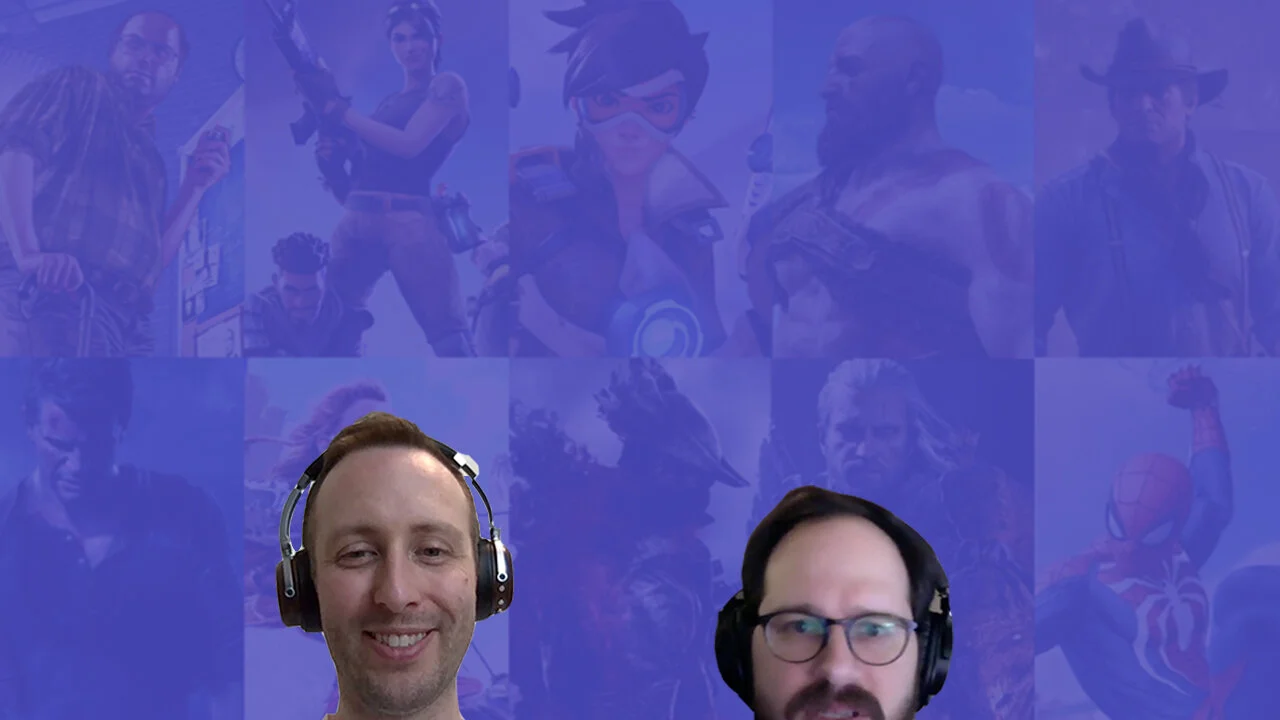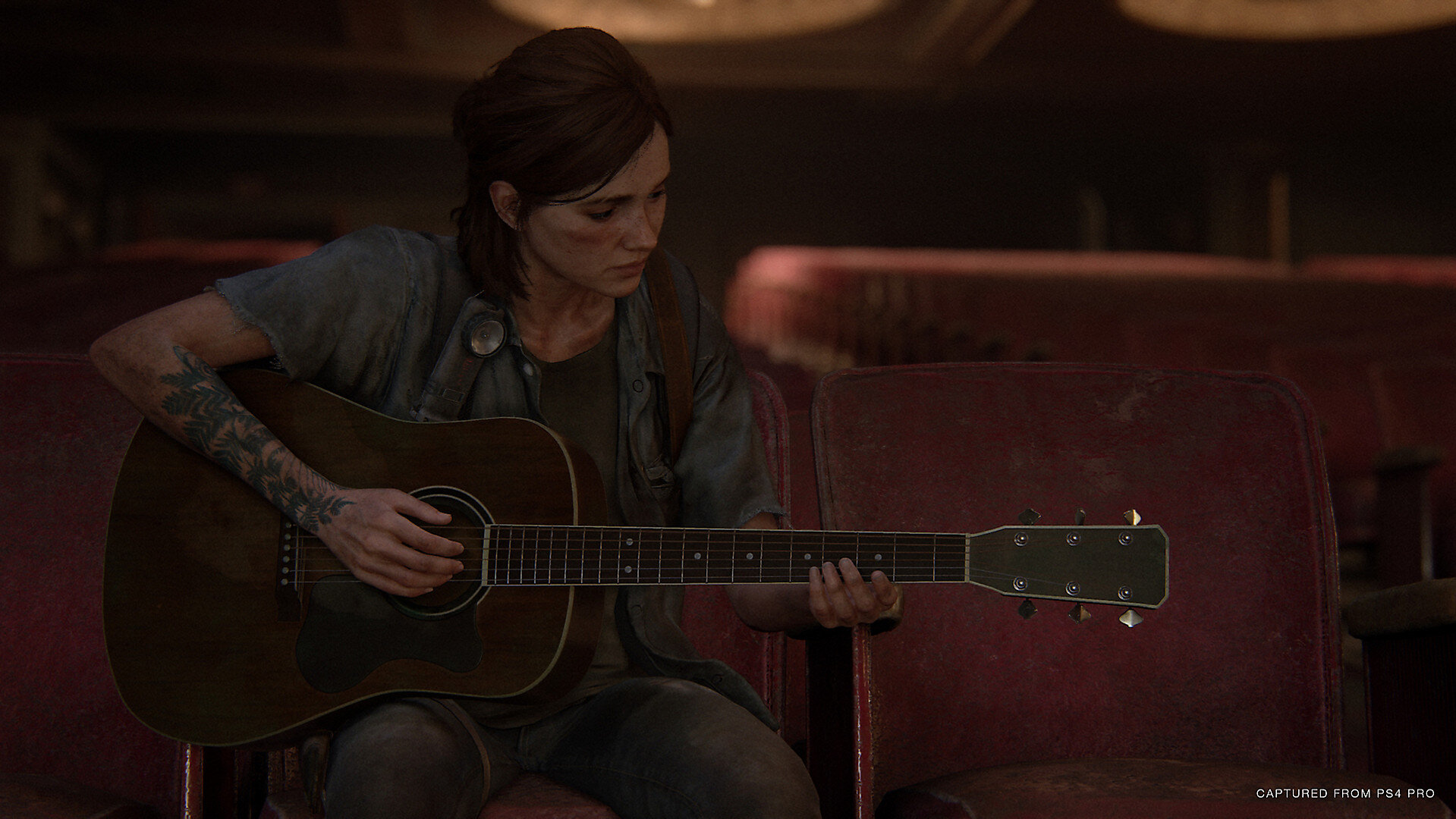New consoles arrive every four to seven years. If you compare a console's games to its last, you will see a spectrum of innovations. Rendering techniques become more efficient and realistic; designers find new ways to explore interaction and storytelling; game developers push the state of the art forward a little at a time. We at Sonic Bloom would like to take a moment to reflect on the outgoing 8th generation to highlight the games we think most exemplified important changes to the medium.
This is part 2 of our two-part list of games. You can read part one here.
“Why are there so many songs about rainbow and what’s on the other side?”
The Last of Us Part II
Justin’s take
What can I say about Naughty Dog that hasn’t already been said? They have mastered the craft of cinematic storytelling and have continually pushed the games industry to tell deeper stories with every game they’ve released. Whereas the Uncharted games are bombastic romps about a sarcastic everyman doing extraordinary things, The Last of Us is a profoundly stoic reflection on society, as all good end-of-the-world stories are. What The Last of Us Part II manages to bring to the table, however, is a maturity to storytelling that is just not often explored in games. While most games are still in that awkward college phase, Naughty Dog is working on Doctoral theses. The story of Ellie and Abby artfully contrasts the two characters to really explore self-conflict. It doesn’t take your beloved character and give her a meaningless quest that ends in predictable catharsis; it makes you question the banality of suffering in the world and the reason to even pursue it.
As a cherry on top, Naughty Dog has finally developed their gameplay systems to match the depth of their story, so it never stands in their way from delivering a AAA story.
Eric’s take
A fully realized dystopian future with characters that you somehow love to hate and, simultaneously, hate to love. The narrative in The Last of Us Part II, one about cycles of revenge, is the most mature one I've seen in games. By "mature" I do not simply mean in its use of expletives, nudity, or even simply subject, but in the manner in which it was delivered. The depictions of violence are not simply there for shock value, but serve the story purpose of showing how these characters are willing to cross more and more boundaries to achieve their goals and, in the process, becoming that which they desire to destroy... worse, even. This game frequently has you feeling uncomfortable with your actions and yet somehow also feeling morbidly justified in them. That is a real win.
“Chung! Chung! Chung! Magitek armor!”
Octopath Traveler
Eric’s take
I was a big fan of JRPGs from the 16 and 32-bit era. Beyond that, however, I generally found the mechanics and stories to be so convoluted as to be confusing and not worth my time. Octopath Traveler is a love letter to the JRPGs from that amazing era, delivered in a retro style with a modern game engine and beautiful graphical flair. The real heart of this game, however, is in the stories. While you traverse a small part of a larger world through the course of the game, you can experience up to eight separate stories that range in scale from personal to "save the world". The mechanics of the game feel like a modernized version of mechanics of yore; a return to form that is easy to learn and takes time to master. Oh, and it features one heck of a charming soundtrack. A pure joy to play.
“According to this map, I should be pointed at a mountain.”
Firewatch
Justin’s take
From the outset of Firewatch, you are answering questions that you know are setting you up for a more intimate game than you’re used to. The brilliance of Campo Santo and Firewatch is that there are two games running in parallel. On one hand, you have a bizarre, sci-fi mystery taking place in a national park and, on the other hand, a personal story of a man who has run away from life. It asks the player the same questions it asks the character about responsibility and accepting life for what it is instead of running from it. It’s a perfect metaphor for video game escapism. It’s deep, it’s personal, and it’s done with beautifully written and acted dialog that unfurls through a series of radio conversations and inner dialogue. What Campo Santo does right, it does really right; an introspective story wrapped in the veneer of a mystery surrounding a whimsically rendered park.
“Baby octorok do-doo da-do dat.”
Cadence of Hyrule: Crypt of the Necrodancer ft. The Legend of Zelda
Eric’s take
This game took me a bit by surprise. While I never got to play the original Crypt of the Necrodancer, I understood its appeal. That said, I was initially very skeptical of Cadence of Hyrule: isn't this just that rhythm game with a layer of "Legend of Zelda paint" slapped on? No, it turns out, it's much more! Somehow the combination of the two games produced something very special that managed to surprise at just about every turn. The interpretation of tried and true Legend of Zelda characters, items, and tropes is charming beyond belief and breathes a fresh new feeling to the world of Hyrule. While this game is decent in single-player mode, it really shines in two-player coop.
“What is the air-speed velocity of an unladen swallow?”
Brothers: A Tale of Two Sons
Justin’s take
Can we really say Brothers is a PS4/XBOne gen title? I don’t know, but I played it on PS4, and the world of game development is better for it. At first, Brothers seems a bit standard with an oftentimes awkward control scheme. Your two characters are controlled by individual control sticks on a single controller. You will be annoyed with the strange control scheme and question why they hadn’t opted for something more straightforward. The genius of it, however, sneaks up on you. The clunkiness gives way to a legitimate plot device in a game devoid of any dialog or writing. What Brothers does with their controls pushes the game into that “game as art” category. It can only be done with an interactive medium, and it’s a lesson all games could learn from. Brothers begs the question, “why don’t more games make use of the one tactile connection to the character more often?”
“If you try to run, I’ve got 6 little friends that can all run faster than you can.”
Super Mario Odyssey
Eric’s take
If Super Mario 3D World brought the Mario franchise back to a "level-based progression" with branching maps (like those found in Super Mario Bros. 3 and Super Mario World), Super Mario Odyssey returned it to the area-exploration format first introduced with Super Mario 64. With challenges littered in every corner and a bright, inviting world to explore, the game was difficult to put down. Perhaps the most surprising thing was what Nintendo has been able to accomplish with the limited Switch hardware. The game doesn't feel like it should look this good - this polished - and still fit on a handheld device. And yet here we are. This is a Mario platformer game at its greatest.
We hope you’ve enjoyed our list of games we think defined this generation of games. While I’m sure there are games you think we missed, it is likely because we haven’t played them yet. If you have games that impressed you with innovations in storytelling or game design, let us know! We want to know about it since there is still time for us to play them!







